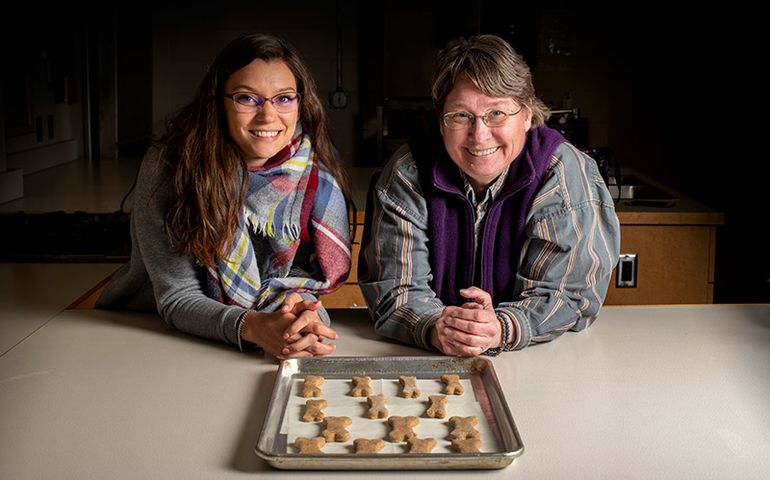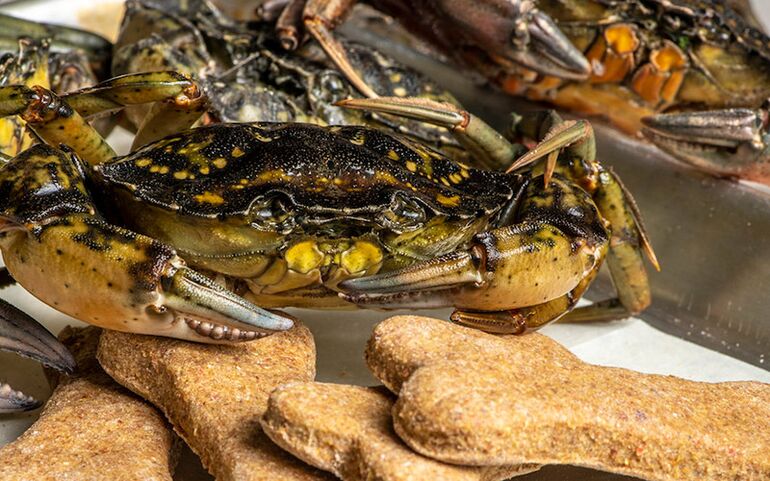A possible use for invasive green crabs? Dog biscuits
A team at University of Maine’s School of Food And Agriculture is looking into the potential for using green crabs as an ingredient in dog biscuits.
Angela Myracle hit upon the idea when she was shopping for a present for her partner’s new dog.
Myracle is an assistant professor of human nutrition at UMaine’s School of Food and Agriculture and a scientist with the Sustainable Ecological Aquaculture Network, which is a program of UMaine’s Established Program to Stimulate Competitive Research.
“I bought some dog biscuits. They happened to be lobster flavored,” she said. “I then looked over the package and said, ‘These are lobster treats and they’re produced in Iceland? Really? We can do this in Maine.’”
But instead of lobster, she said, dog biscuits seemed like a great opportunity to use green crabs, a voracious invasive species that’s decimating Maine’s clam populations, threatening the livelihoods of clammers and clogging lobster traps.
“People are never going to eat green crabs because they’re so small,” she said.
But the crabs, used whole, have protein, fiber and mineral components that make them useful as dog biscuits, she said.
One of Myracle’s students, Anna Smestad, a human nutrition and pre-med major, took on the project.
“We bought two pressure cookers,” Myracle said. “We had to figure out a way to cook these things, dry them and grind them up. She’s figured out that process.”
Smestad cooked 10 to 15 crabs at a time, including the shell, for as long as 90 minutes. She then ground them into a fine powdered meal, added flour, then shaped and baked them into a biscuit.
Smestad experimented with creating oat, wheat and rice flour-based biscuits. The two tested the biscuits on dogs belonging to family and friends. The rice biscuit wasn’t successful. Oat had better luck. The dogs mostly favored the wheat variety, Myracle said.
“It binds together nicely and bakes up to a golden brown cookie with some pliability, so it’s not hard as a rock,” she said.
Smell was a consideration. Myracle said her partner objected to the smell of the Icelandic lobster biscuits, but the partner and other dog owners said the green crab biscuits were acceptable.
Myracle and Smestad continue to examine the digestibility of the biscuits, as well as their nutritional value, texture and pliability.
Now, Myracle said, “We hope to get the idea out there and see if someone wants to pursue it.”
The biscuits could be a great marketing opportunity, she said, given trends these days for dog-targeted products, combined with visitors who seek Maine products.
“It’s about taking a simple idea to solve a complex problem and help the Maine economy,” she said.















0 Comments